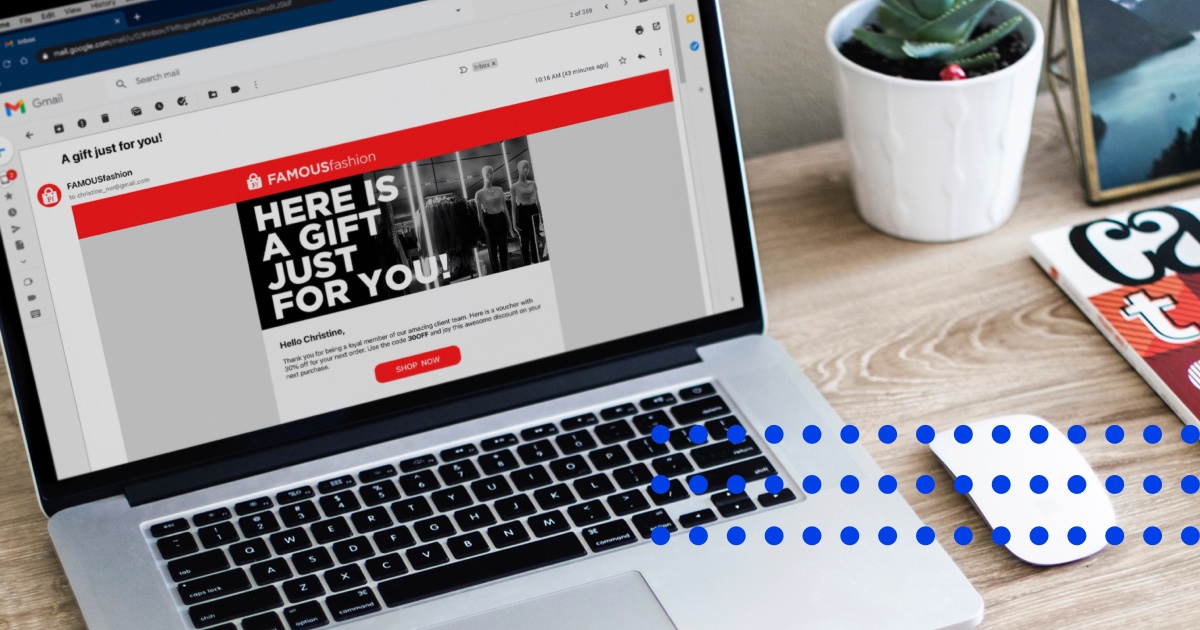
Personalization in customer experience is key! Time to get it right!
In this blog alone, personalization has been one of the most used terms. How can it not be?
Personalization is the holy grail of modern-day marketing and meaningful customer experiences (also referred to as CX). In 2019, McKinsey stated that personalization will be the prime driver of marketing success within five years.
Although relatively new in the grand scheme of things, many companies are claiming that they are implementing it, without necessarily understanding why they are doing it and if they are doing it right.
The result… 87% of businesses believe they offer superior customer experiences, while 79% of respondents feel like a generic customer rather than a unique individual when they engage with a business online, according to Acquia’s State of Personalization Today. It is clear that many companies still have not grasped the importance of personalizing the customer experience. They better do fast.
Why are personalized customer experiences so meaningful?
To better answer this question let us view the customer experience from a customer’s stance. Do we appreciate receiving offers and recommendations that are relevant to us? Do we enjoy reading content that is personalized to us according to our recent purchase? Well, most often than not, the answer will be yes.
The digital age has brought a significant increase in consumer expectations for relevant, contextual, and convenient experiences. Truth is, there has never been a time when customer experience was more important than today. Customers not only want but also expect a personalized experience when they interact with your business. Simply put, your consumers are used to getting what they want when they want it. Consumers will shift to brands that provide them with what they look for and acknowledge them as individuals at every step of their customer journey.
91% of consumers are more likely to shop with brands who recognize, remember, and provide them with relevant offers and recommendations, according to an Accenture survey. By creating relevancy you foster loyalty and ultimately boost your business growth and drive sales.
According to a study conducted by Monetate, there are 3 main reasons why you should invest in personalized customer experiences:
1.93% of companies with an “advanced personalization strategy” experienced revenue growth compared to 45.4% of companies without a personalization strategy.
2.Companies with an ROI of 2x or more reported that personalized customer experiences composed 20% of their marketing budget.
3.Brands focused on personalized customer experiences and customer loyalty as their top KPI had an ROI of 3x or more.
Although research shows the increased need for personalization in customer experience, the question of how to go about delivering it remains. So, let’s take a look a little deeper into how you can go about creating memorable and personalized CX experiences.
Collect & listen to data
If you want to provide personalized customer experiences, this is where you start from. It is important to analyze all your customer-related data. This is the initial step you need to take to acquire valuable feedback, which will enable you to design a working strategy. Here are three ways to get started:
-Conduct opinion polls and customer surveys
-Track all social media comments from social media followers and email subscribers
-Look at your website analytics to reveal user behavior
Keep in mind that this is not a one-time task but an ongoing process that you need to incorporate into your marketing strategy and invest time in to get proper and meaningful results. According to research, 68% of consumers abandon a business because they feel the brand does not care about them.
Feedback loops are a great way to listen and learn from your customers. Customers that know a business is listening to them are much more likely to have a positive experience with your business and are much more likely to return. By collecting data on the customer journey, you can gain feedback and insights into your current customers’ current obstacles, opportunities, and market segmentation, while they feel heard and valued. Through the use of intelligent customer journey analytics, you will increase conversions, improve brand loyalty, and deliver insights for improving your customer experience.
Segment and develop customer profiles
Personalization and segmentation are often used interchangeably. Even marketers often get them confused.
On the one hand, through segmentation, you attempt to group prospects into similar groups, while through personalization you customize a person’s experience according to their individual needs and desires. Both are based on the in-depth information and insights you have discovered. Personalization, however, is your ultimate goal here.
When you have collected enough data to work with, you can easily segment your audience based on various indicators. Some of the common ways of segmenting are by age and gender, location, education, annual income, and shopping habits.
Execute your strategy across multi-channels
Once your data has been collected and segmented into consumer profiles, you can start the execution of your strategy across all channels, platforms, and sites, offering an omnichannel experience.
The use of sophisticated technology facilitates the delivery of targeted messages that are specifically designed for certain results.
Customers don’t think of their experience in terms of channels. Whether it is by phone or by email, via social media or live chat, customers expect you to be there when they need you, when it is most convenient to them. In the hyper-connected world that we live in, they expect to be provided a seamless personalized experience across channels. If you are not providing an omnichannel experience it is your bad, your customers will happily switch to a competitor that does.
The Importance of the Customer Journey
As we have made it clear above, in our fast-paced consumer world, it is not enough to provide a seamless and exceptional customer experience, it also has to be a unique and personal journey.
Everything you do along the customer journey impacts your customer’s perception and overall experience. From the moment they land on your website to navigating it, and from speaking to customer service to making the purchase and beyond. Each and every interaction your customer has with your brand, across multiple touchpoints, should be carefully crafted, frictionless, and simple.
By identifying a customer journey you can analyze and uncover critical obstacles and opportunities along the way and understand how every single touchpoint affects growth, retention, and customer success. A customer journey map is critical in this, to visualize how customers progress through the different touchpoints that make up the whole of your customer experience.
Reflect & Review
Just like any other process, personalized customer experiences require continuous review and optimization. As we all know, habits and needs evolve. So do customer profiles. Take a step back periodically to evaluate strategies or other elements of your personalized campaign. It is crucial to review your customers’ preferences and seek feedback, to ensure that you are still offering a personalized experience.
A common practice is to let campaigns run for a couple of weeks to have an accurate impression of actual progress over time. Do not rush into analyzing the results and making quick decisions. Finally, it is important to check up on all of your technological integrations, making sure you have a good overview of the flows you have set up and the entire process.
Do it right! Create unique personalized customer experiences that count.
The pressure for brands to perform and execute outstanding personalized customer experiences is real. They have to do it right or else they will face the ‘consequences’. Strategically optimizing your customer journey and customer experience will increase customer loyalty and satisfaction while boosting conversions. Use tools that will help you make the right decisions and engage with your customers every step of the journey. We pride ourselves in offering such tools!
Using Routee’s omnichannel communication platform you can seamlessly incorporate all your communications channels into one easy-to-manage platform. Through our tracking tools, you can get all the help you need in tracking your customer’s journey and collecting valuable information to make smarter decisions. The platform’s analytic tools will help you in regularly evaluating your offerings and the experience you provide. All in all, using Routee’s automated marketing services you can personalize the customer experience while reducing your communication costs.
Our agents will be happy to hear from you and assist you.
